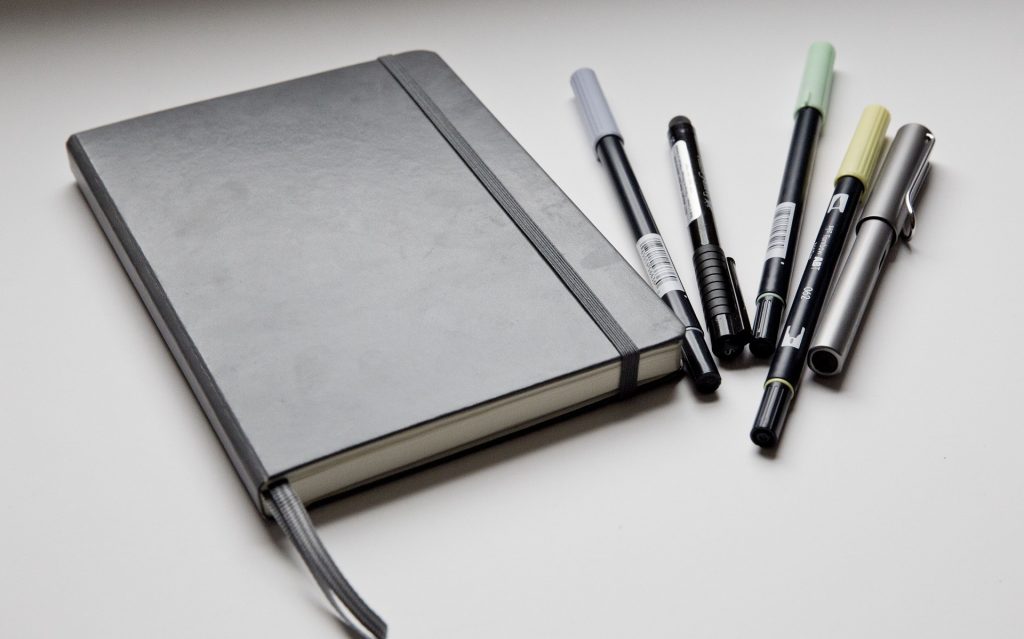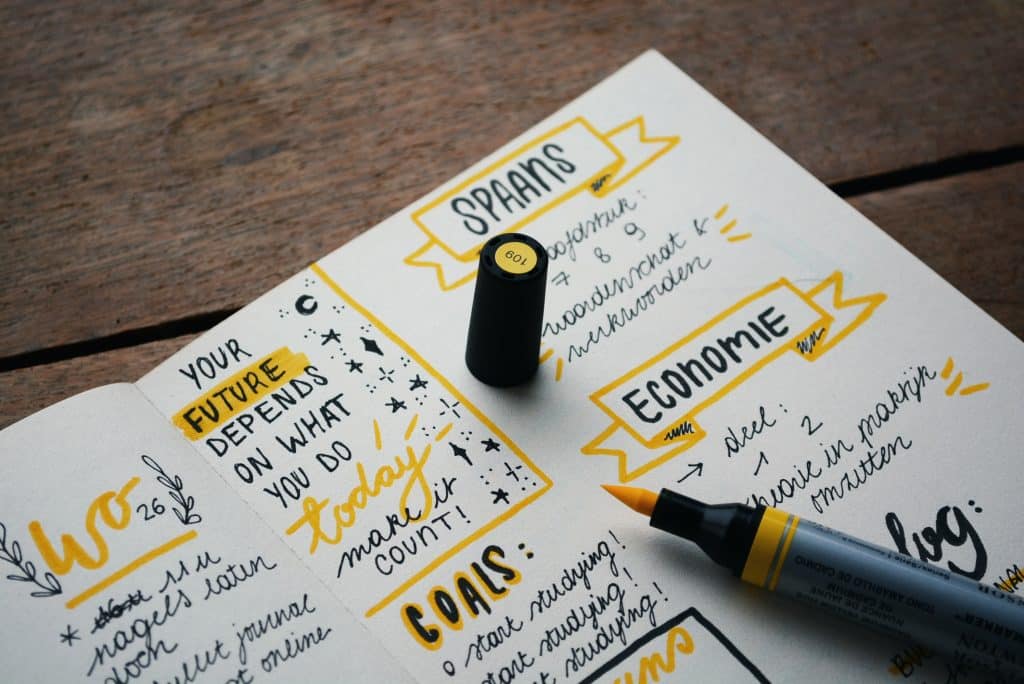When you think of journaling, do you think of sitting with a diary or book? And writing about your feelings, the days’ activities or plans for the future?

There are actually different ways you can reap the benefits of journaling that will fit your lifestyle and routine. We all have different ways of expressing ourselves and to really benefit from a journaling routine, it needs to fit you.
Do you know how you express yourself best? If not, try a few of these methods until something feels right to you. You know it’s right when you feel comforted, relaxed, and joyful after completing your daily journaling or looking at your past journals.
I know that I am a list maker, this is most comfortable for me. But I also know I am not at all comfortable with using my phone or other device to speak (or video) my thoughts.
Here are nine different journaling techniques that will make journaling more effective: lists, morning pages, bullet journaling, gratitude journaling, prompt journaling, voice journaling,, video journaling and art journaling.
1. Lists
A great way to get started with journaling is simply making lists of things on your mind. This can be a list of things you need to do, things you’re grateful for, things that are stressing you out, or anything else on your mind. Getting these thoughts down on paper can help you to organize your thoughts and get a better handle on what’s going on in your life.
2. Morning Pages
Morning pages are a journaling technique made popular by author Julia Cameron. The idea is to write three pages of stream-of-consciousness writing first thing in the morning. This helps you get your thoughts and feelings out on paper so you can start your day with a clean slate.
This is helpful if you are like me and have a thousand random thoughts in your brain at one time. It is difficult to focus on one idea, no matter how good if they are all circling demanding the same attention. Writing down all those thoughts helps you focus on specific topics.
3. Bullet Journaling
Bullet journaling is a type of journaling that uses short, concise sentences or bullet points to capture thoughts and ideas. This method allows you to track your thoughts and ideas without getting bogged down in too much detail.

I like to use this type of journaling for my lists that I make. Each bullet page is a list where the ideas are connected and that page is titled and indexed on the first few pages of the journal. I keep lists of all types of things naturally, so this type of journaling works for me and a bullet journal keeps it organized.
4. Gratitude Journaling
Another great way to use your journal is to focus on gratitude. Every day, write down a few things that you’re grateful for. This lets you shift your focus to the positive things in your life and is a fabulous and joy-filled way to start your day on a positive note.
One of my favorite quotes is from Oprah Winfrey:
If you concentrate on what you don’t have, you will never, ever have enough.
Instead focus on what you already have and be grateful. I remember years ago, I took a seminar about solving your problems. It seemed like a winner. The speaker gave us all small slips of paper and told us to write down our most pressing problem and fold the paper.
Then we were told to rid ourselves of that problem by placing it in the large jar in front of the stage. The only rule was that we had to take someone else’s problem. Not a single person was willing to take on another problem instead of their own.
5. Prompt Journaling
If you’re struggling to come up with things to write about, prompt journaling can be a great solution. A popular method is to choose a word or phrase and then write about it for five minutes. The prompt helps you get your creative juices flowing and gives you a great starting point for your journaling session.

And there are a lot of different PLR sellers that offer journaling prompts with their packs. These prompts can be the basis of journals you can sell to others. This time of year a hot topic is always fitness so my friend Sue from Createful Journals has a set of WEIGHT LOSS JOURNAL PROMPTS that would be perfect for creating a journal.
6. Voice Journaling
Another effective journaling technique is voice journaling. This involves recording yourself talking about your thoughts and feelings on a recorder or smartphone. You can then listen to these recordings and transcribe them into your journal.
This way to capture your thoughts and feelings more naturally works for people who dislike writing and don’t want to use other hands-on methods. It also has the added benefit of doing this while driving, working out or doing other tasks.
7. Video Journaling
This one is also easy if you use your smartphone and a way to journal while commuting. Just get a holder for the phone in your car, turn on the camera and journal your thoughts. You can transcribe the thoughts into a digital journal or just post links to the recordings.
8. Art Journaling
If you’re looking for a more creative outlet for your journaling, art journaling may be proper for you. This involves using your journal as a blank canvas and filling it with drawings, paintings, or collages. This can be a great way to express your creative side and therapeutic activity.
Any of these journaling techniques can work for you. It’s up to you to choose the type of journaling that will work best for your lifestyle and personal needs. Think about how you like to express yourself and choose a method that works with your lifestyle.
Want to know more about the benefits of journaling? I’ve got you covered. Read BENEFITS OF JOURNALING.
I’d love to know if you journal and what type of journals you use. Hit me up at [email protected] and let’s connect.
